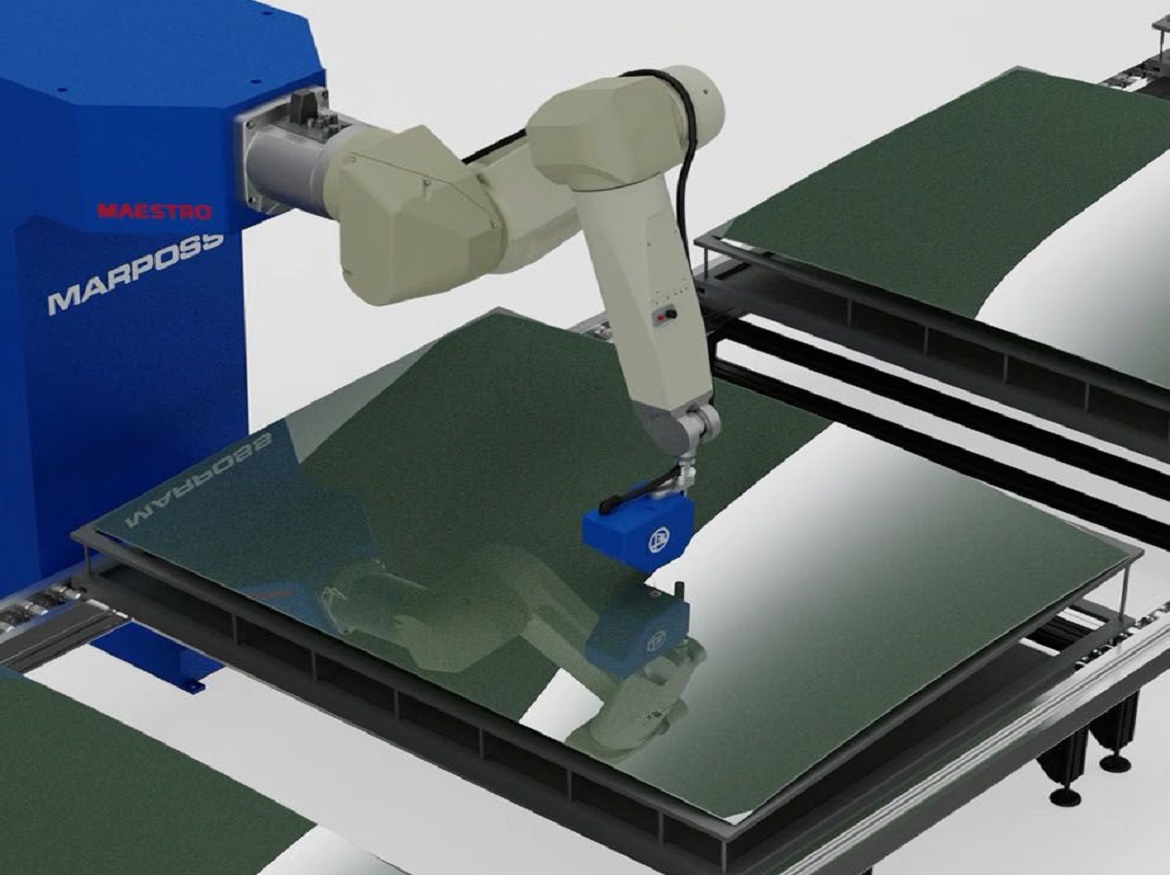During the last years, the automotive glass industry has undergone a significant transformation. This change has shifted the industry’s focus from producing small, simple-shaped glass primarily serving the purpose of exterior coverage, to incorporating glass as a design element in new car models.
This rapid development, the quantity, complexity and additional functions of glass, have led to increasing demands for quality control, including measurement of thickness, shape and edges.
The expansion in the use of glass in modern cars has driven a need to reduce overall vehicle weight to control energy consumption. This has resulted in thinner (even less than 3.5mm), yet stronger glass designed to enhance safety and impact resistance, while also serving as a platform for user experience improvements through features like head-up displays, providing speed, navigation and general vehicle status information.
MAESTRO: A flexible solution for Surface Measurement
The increasing complexity and integration of additional functions in automotive glass have fueled the development of a versatile measurement system: one that can measure different types of glass simply by selecting the correct measuring program.
Marposs’ latest glass control solution, MAESTRO, combines non-contact technology with robotics: MAESTRO’s non-contact measuring head, utilizing chromatic confocal and line profiler technology, can measure dimensions and thickness without touching the glass, preventing the risk of damaging, deforming or moving it during the measuring cycle.
By incorporating robotics, MAESTRO offers flexibility, efficiency and accuracy, suitable for:
- In-Line: measuring glass characteristics directly on the production line. One or more robots working simultaneously ensure short cycle times.
- Off-Line: replacing expansive and complex measuring fixtures.
- Lab Applications: Available with a robot or cobot, it is the right choice for sample inspection at any stage of glass design or production
MAESTRO: Inspection Made Easy
MAESTRO is easy to program: the robot trajectory is automatically defined by the 3D file loaded to create the part program. This system ensures that all measurements are consistently made perpendicular to the surface in a single sweep, eliminating the need to stop at each position for inspection. This efficiency results in faster cycle times and, coupled with the system’s flexibility and ease of use, allows for the measurement of various surfaces in different materials, including glass, composites, plastic polymers, and metals.
MAESTRO also simplifies the measurement process and collects data through Marposs’ QUICK SPC™ software, enabling a common quality platform for both traditional contact – RED CROWN 2™, DIGI CROWN™ and GAGEPOD™ – and non-contact solutions (ENDO™ optical heads, LIGHTMASTER™).
Credits: MARPOSS
Click on the following link Metrologically Speaking to read more such blogs about the Metrology Industry.









